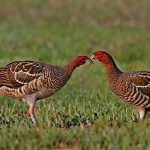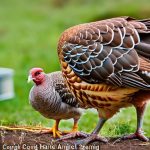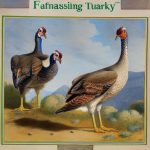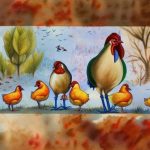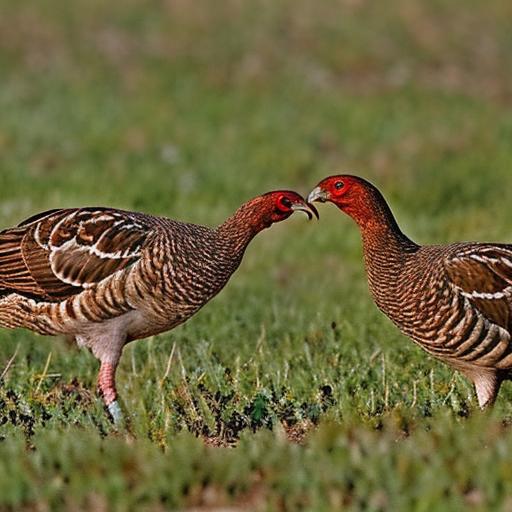Turkey breeding season is an important time for turkey farmers and breeders. It typically occurs in the spring, when the days are longer and the weather is warmer. During this time, turkeys exhibit specific breeding behaviors and mating rituals as they prepare to reproduce. The breeding season is crucial for the continuation of the turkey population and for the production of turkey meat and eggs. Understanding the breeding season and the behaviors associated with it is essential for successful turkey farming and breeding.
During the breeding season, male turkeys, known as toms, become more active and vocal as they compete for the attention of female turkeys, or hens. Toms will puff out their feathers, fan their tails, and strut around in an attempt to attract a mate. They will also gobble loudly to announce their presence and dominance to other toms in the area. Hens, on the other hand, will display receptive behaviors such as crouching down and making soft clucking sounds to indicate their readiness to mate. The breeding season is a time of heightened activity and energy for turkeys, as they engage in these courtship behaviors to ensure successful reproduction.
Key Takeaways
- Turkey breeding season typically occurs in the spring and early summer, when the days are longer and the weather is warmer.
- Signs of turkey breeding behavior include males displaying their feathers, puffing up, and making gobbling sounds to attract females.
- Factors affecting turkey breeding include the availability of food, water, and suitable nesting sites, as well as the presence of predators and diseases.
- The importance of turkey breeding lies in the production of meat and eggs for consumption, as well as the preservation of the species.
- Turkey breeding practices involve providing proper nutrition, housing, and healthcare for the turkeys, as well as monitoring their behavior and reproductive success.
Signs of Turkey Breeding Behavior
During the breeding season, turkeys exhibit specific behaviors that indicate their readiness to mate. Male turkeys, or toms, become more aggressive and territorial as they compete for the attention of female turkeys, or hens. Toms will puff out their feathers, fan their tails, and strut around in an attempt to attract a mate. They will also gobble loudly to announce their presence and dominance to other toms in the area. Additionally, toms may engage in physical displays of dominance, such as pecking or sparring with other males.
Female turkeys, or hens, also display specific behaviors during the breeding season. Hens will crouch down and make soft clucking sounds to indicate their readiness to mate. They may also exhibit receptive behaviors such as presenting themselves to the toms and allowing them to mount them for mating. These behaviors are essential for successful reproduction and are key indicators that the breeding season is underway. Understanding these behaviors is crucial for turkey farmers and breeders, as it allows them to identify when their turkeys are ready to mate and can help them facilitate successful breeding.
Factors Affecting Turkey Breeding
Several factors can affect turkey breeding, including environmental conditions, genetics, nutrition, and overall health. Environmental conditions play a significant role in turkey breeding, as turkeys are sensitive to changes in temperature, light, and humidity. The length of daylight hours can trigger hormonal changes in turkeys, signaling the start of the breeding season. Additionally, temperature and humidity can impact the comfort and health of turkeys, which can in turn affect their breeding behaviors.
Genetics also play a crucial role in turkey breeding, as certain breeds may have specific mating behaviors or reproductive capabilities. Selective breeding programs can influence the genetic traits of turkeys, including their fertility and ability to reproduce. Nutrition is another important factor in turkey breeding, as a well-balanced diet is essential for reproductive health. Proper nutrition can ensure that turkeys have the energy and nutrients needed for successful mating and egg production.
Overall health is also a critical factor in turkey breeding, as any underlying health issues can impact a turkey’s ability to reproduce. Regular veterinary care and disease prevention measures are essential for maintaining the health of breeding turkeys. By understanding and addressing these factors, turkey farmers and breeders can optimize their breeding programs and ensure successful reproduction.
Importance of Turkey Breeding
Turkey breeding is essential for maintaining the turkey population and for the production of turkey meat and eggs. Breeding programs are crucial for developing and maintaining healthy turkey flocks with desirable traits such as high fertility, good maternal instincts, and strong immune systems. Additionally, turkey breeding plays a vital role in meeting the demand for turkey products such as meat and eggs.
Breeding programs also contribute to genetic diversity within turkey populations, which is important for maintaining healthy and resilient flocks. Genetic diversity can help reduce the risk of genetic diseases and improve overall flock health and productivity. Furthermore, successful turkey breeding can lead to improved growth rates, feed efficiency, and meat quality in commercial turkey production.
In addition to its importance for commercial production, turkey breeding also plays a role in conservation efforts for rare or heritage turkey breeds. By carefully managing breeding programs, farmers and breeders can help preserve these unique breeds for future generations. Overall, turkey breeding is essential for sustaining healthy turkey populations, meeting consumer demand for turkey products, and preserving genetic diversity within turkey flocks.
Turkey Breeding Practices
Turkey breeding practices involve careful management of breeding stock, mating processes, egg incubation, and chick rearing. Selecting high-quality breeding stock with desirable traits such as fertility, growth rate, and meat quality is essential for successful breeding programs. Breeders may use selective breeding techniques to improve these traits over successive generations.
Mating processes are carefully managed to ensure successful reproduction. Farmers may use controlled mating systems to pair compatible males and females for optimal genetic diversity and reproductive success. Additionally, artificial insemination techniques may be used to improve fertility rates and genetic selection in commercial turkey breeding operations.
Egg incubation is a critical stage in turkey breeding, as it determines the success of chick hatching. Farmers carefully monitor temperature, humidity, and turning of eggs during the incubation process to ensure optimal conditions for embryo development. Once hatched, chicks are carefully reared with proper nutrition, housing, and healthcare to ensure their growth and development into healthy adult turkeys.
Overall, successful turkey breeding practices involve careful selection of breeding stock, controlled mating processes, precise egg incubation techniques, and attentive chick rearing practices. By implementing these practices, farmers and breeders can optimize reproductive success and maintain healthy turkey flocks.
Challenges in Turkey Breeding
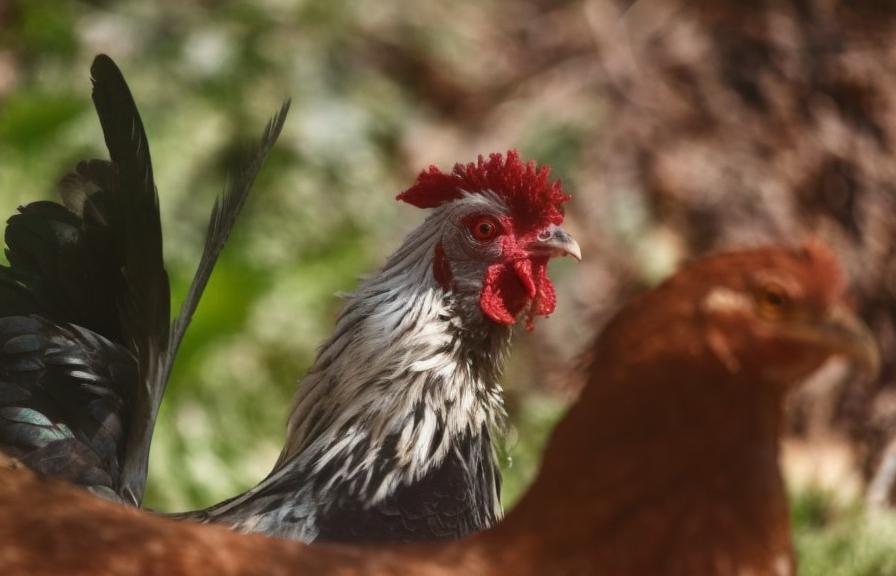
Turkey breeding presents several challenges for farmers and breeders, including disease management, genetic diversity preservation, reproductive health issues, and market demand fluctuations. Disease management is a significant challenge in turkey breeding, as infectious diseases can spread rapidly within flocks and impact reproductive health. Farmers must implement strict biosecurity measures and vaccination protocols to prevent disease outbreaks and maintain flock health.
Preserving genetic diversity within turkey populations is another challenge in breeding programs. As commercial production focuses on specific breeds with desirable traits, rare or heritage turkey breeds may face extinction without proper conservation efforts. Breeders must carefully manage genetic diversity through selective breeding programs and conservation initiatives to ensure the long-term viability of these unique breeds.
Reproductive health issues can also pose challenges in turkey breeding. Fertility problems, egg production issues, and reproductive disorders can impact the success of breeding programs. Farmers must closely monitor the reproductive health of their turkeys and address any underlying issues through proper nutrition, healthcare, and management practices.
Market demand fluctuations can also impact turkey breeding operations. Changes in consumer preferences or economic conditions can influence the demand for turkey products such as meat and eggs. Farmers must adapt their breeding programs to meet market demands while maintaining sustainable production practices.
By addressing these challenges through proactive management practices, disease prevention measures, genetic diversity conservation efforts, reproductive health monitoring, and market adaptation strategies, farmers and breeders can overcome obstacles in turkey breeding and maintain healthy and productive flocks.
Conclusion and Future of Turkey Breeding
In conclusion, turkey breeding plays a crucial role in maintaining healthy turkey populations, meeting consumer demand for turkey products, preserving genetic diversity within turkey flocks, and contributing to conservation efforts for rare or heritage turkey breeds. Understanding the behaviors associated with the breeding season is essential for successful reproduction in turkeys. Factors such as environmental conditions, genetics, nutrition, and overall health can impact turkey breeding success.
Turkey breeding practices involve careful management of breeding stock selection, mating processes, egg incubation techniques, and chick rearing practices. Challenges in turkey breeding include disease management, genetic diversity preservation, reproductive health issues, and market demand fluctuations. By addressing these challenges through proactive management practices and conservation efforts, farmers and breeders can overcome obstacles in turkey breeding.
The future of turkey breeding lies in continued research and innovation to improve reproductive success rates, genetic diversity preservation efforts, disease prevention measures, sustainable production practices, and market adaptation strategies. By staying informed about best practices in turkey breeding and implementing proactive management strategies, farmers and breeders can ensure the long-term success of their turkey breeding programs while contributing to the sustainability of the turkey industry.
If you’re interested in learning more about turkey breeding, you might also want to check out this informative article on creating the perfect chicken coop for your feathered friends. Whether you’re in Chester, SC (source), Muskegon (source), or looking to build a charming farmhouse chicken coop (source), this article provides valuable insights into creating a comfortable and safe environment for your poultry.
FAQs
What is the breeding season for turkeys?
The breeding season for turkeys typically occurs in the spring, from March to May.
Do turkeys breed in the fall?
While turkeys may engage in courtship behavior in the fall, the primary breeding season for turkeys occurs in the spring.
How do turkeys breed?
Male turkeys, known as toms, display their feathers and perform elaborate courtship displays to attract females, known as hens. Once a hen is receptive, mating occurs.
What are the signs that turkeys are breeding?
Signs that turkeys are breeding include toms displaying their feathers, gobbling, and strutting to attract hens. Hens may also exhibit receptive behavior, such as crouching and vocalizing.
Are turkeys breeding now?
The breeding season for turkeys typically occurs in the spring, so if it is currently spring, it is likely that turkeys are breeding. If it is not spring, turkeys may be engaging in courtship behavior but are not in their primary breeding season.
Meet Walter, the feathered-friend fanatic of Florida! Nestled in the sunshine state, Walter struts through life with his feathered companions, clucking his way to happiness. With a coop that’s fancier than a five-star hotel, he’s the Don Juan of the chicken world. When he’s not teaching his hens to do the cha-cha, you’ll find him in a heated debate with his prized rooster, Sir Clucks-a-Lot. Walter’s poultry passion is no yolk; he’s the sunny-side-up guy you never knew you needed in your flock of friends!


